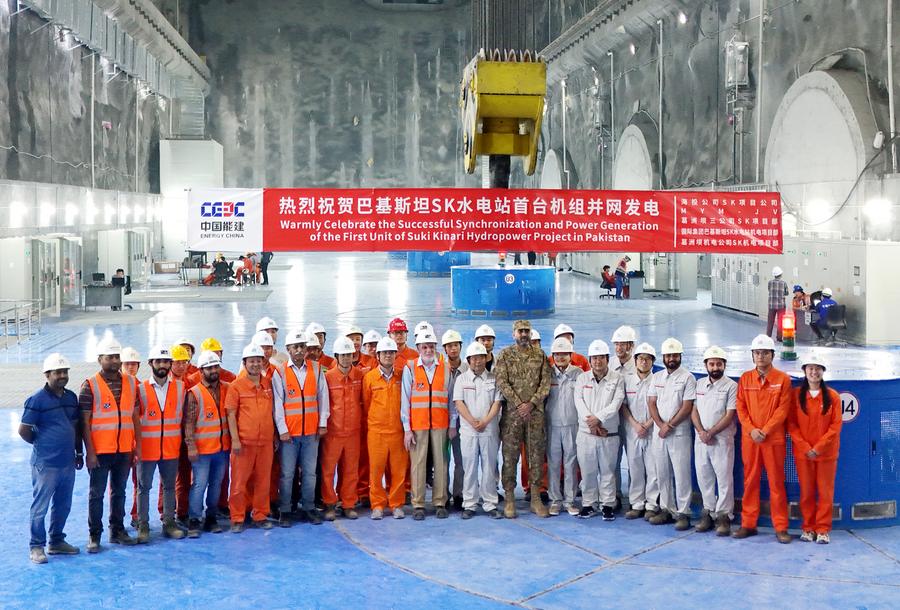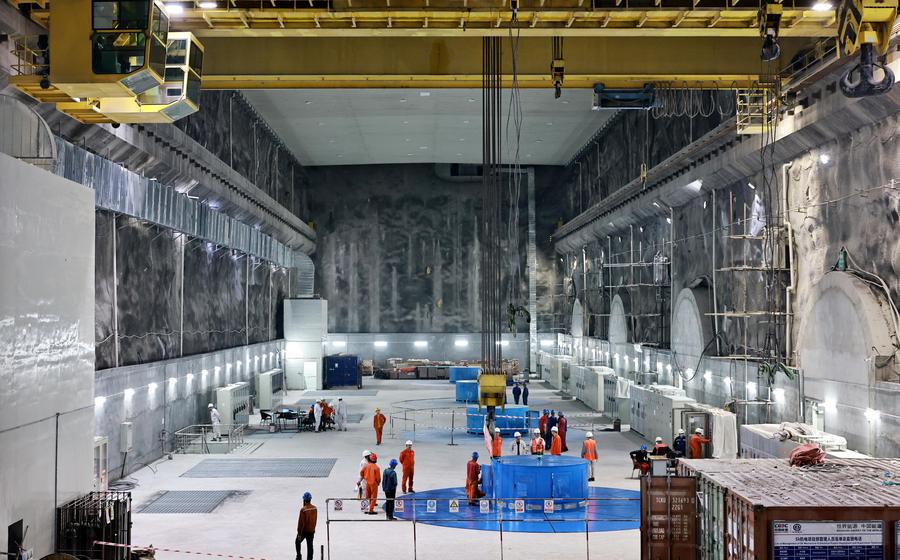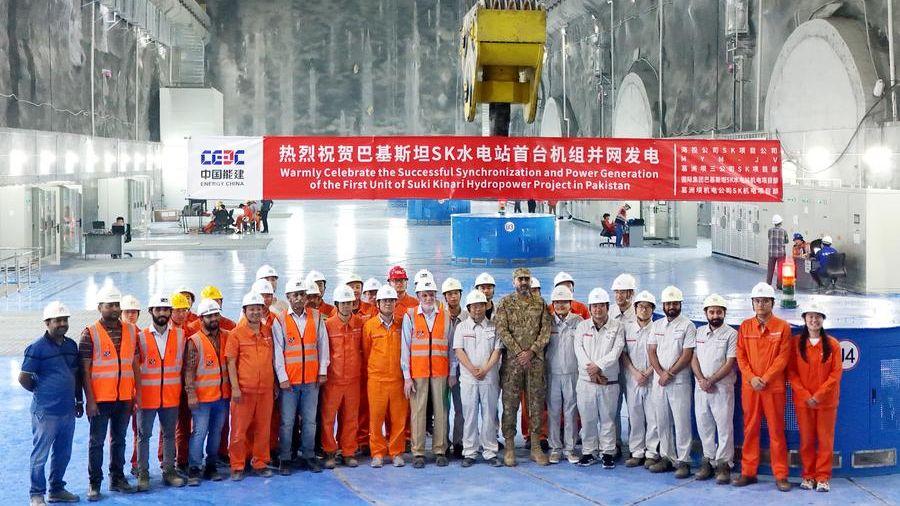
The hydropower project's first unit connected to the grid in Pakistan marks that the project under the framework of the China-Pakistan Economic Corridor has taken the most critical step towards commercial operation.
ISLAMABAD, Aug. 13 (Xinhua) -- The first unit of the Chinese-built Suki Kinari Hydropower project in northwest Pakistan was connected to the grid for power generation on Monday.
It marks that the project under the framework of the China-Pakistan Economic Corridor (CPEC) has taken the most critical step towards commercial operation.
He Xiongfei, deputy general manager of China Energy Construction Overseas Investment Company Ltd., which invests in and implements the project, told Xinhua that the hydropower station began transmitting clean electricity to the locals after the first unit was connected to Pakistan's national grid.
The project is expected to provide more than 1 million Pakistani households with affordable clean electricity each year in the future, the Chinese manager said.
It will contribute to Pakistan's adjustment of national power energy structure, reducing the gap between electricity supply and demand, and helping promote infrastructure and economic development in the South Asian country, he added.

Located in the Mansehra district of the Khyber Pakhtunkhwa province, the 884-megawatt hydropower project, which has installed four impulse units, started construction in January 2017.
Once becoming functional later this year, it will generate some 3.21 billion kilowatt-hours of clean electricity annually, replacing 1.28 million tons of coal and reducing 2.52 million tons of carbon dioxide emissions per year, according to the Chinese manager.
Launched in 2013, the CPEC is a flagship project of the China-proposed Belt and Road Initiative. It is a corridor linking the Gwadar Port in southwest Pakistan's Balochistan province with Kashgar in northwest China's Xinjiang Uygur Autonomous Region. The project highlights energy, transport, and industrial cooperation in the first phase, and in the second phase expands to the fields of agriculture and livelihood, among others.




 A single purchase
A single purchase









